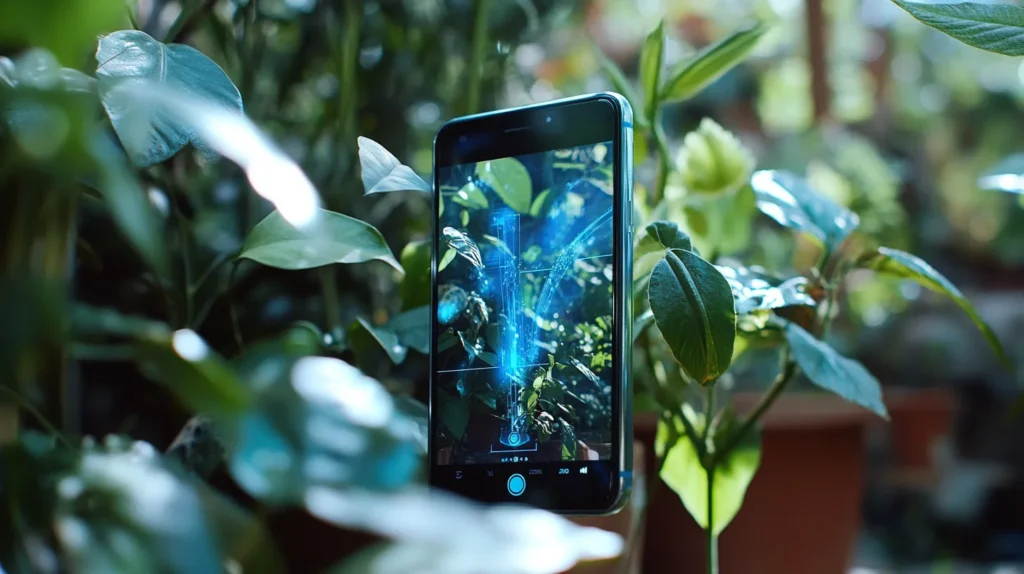Advertising
With technology making our daily interactions easier than ever, getting closer to nature has never been easier. Today, all you need to do is point your smartphone’s camera at it to discover details about the vegetation around you. Whether you’re a gardening enthusiast, curious about botany, or just someone who enjoys exploring the natural world, plant identification apps are great allies in unraveling the mysteries of flora. In this post, we’ll explore two free apps that help you identify plants, making nature more accessible and interesting for everyone.
Advertising
1. PlantNet: Practical and Accurate Plant Identification
PlantNet is one of the most reliable apps for identifying plants in a practical and straightforward way. Created by a team of botanists and researchers, this app offers an extensive database covering thousands of species around the world. If you want quick and accurate identification, PlantNet is an excellent choice, using advanced image recognition technology to identify species from photos.
PlantNet Main Features:
- Visual Recognition of Plants: Simply take a photo of the plant or specific parts of it (such as leaves, flowers or fruits), and PlantNet compares the image to its database to identify the species.
- Collaborative Database: Users can submit photos and data, helping to expand the app's collection. This allows species from various regions, including lesser-known ones, to be identified.
- Worldwide Coverage: With support for several regions, including Latin America, Europe, Africa and Asia, PlantNet allows the exploration of flora in different continents, facilitating the identification of local and exotic plants.
How it Works: With an easy-to-use interface, PlantNet lets you take a photo of a plant and within seconds provides details about the species, including scientific name, family, and other relevant information.
Ideal for amateurs and experts alike, PlantNet is an essential tool for gardeners, botany students and anyone who wants to learn more about the biodiversity around them.
Download the app from your app store:



2. iNaturalist: A Community for Exploring Nature
For those looking for an experience beyond plant identification, iNaturalist is a must-try option. Developed in collaboration with National Geographic and the California Academy of Sciences, this app connects explorers from around the world on a collaborative platform. iNaturalist identifies not only plants, but also animals and fungi, offering a more complete view of biodiversity.
iNaturalist Main Features:
- Comprehensive Identification: iNaturalist allows you to identify a variety of life forms, including animals and fungi, in addition to plants. It is ideal for those who want a broader learning experience.
- Support Community: User observations can be shared so that other members, including experts, can help with identification, promoting an environment of collaboration and mutual learning.
- Location Record: The app saves the location of observations, creating a map of the species recorded in different areas, great for those who want to document local flora and fauna or explore new regions.
How it Works: To use iNaturalist, simply take a photo of the plant or living thing you want to identify and upload it to the app. If automatic identification is not accurate, the community can help, enriching the process with exchanges of knowledge and experiences.
iNaturalist is more than a plant identifier; it is a tool for connecting with nature, encouraging collective learning among biodiversity lovers.
Download the app from your app store:


Comparing the Applications
These two apps have unique proposals for plant identification:
- For Fast and Accurate Identification: The PlantNet is the best choice, offering an extensive database and a practical interface for those looking for quick results.
- For a Collaborative and Broad Experience: The iNaturalist is ideal, with the possibility of identifying various life forms and interacting with a global community of explorers.
Both apps are free and have impressive features for anyone who wants to learn more about the natural environment, whether they are a beginner or an expert.
Tips for Getting the Best Results
To optimize results when using these applications, here are some practical suggestions:
- Use High Quality Photos: Make sure the plant is well lit to capture clear details.
- Photograph Different Parts of the Plant: Images from different angles, such as leaves, flowers or fruits, increase identification accuracy.
- Prefer Daylight: Natural light highlights colors and textures better, aiding recognition.
Conclusion
With PlantNet and iNaturalist, you can turn any outdoor outing into a journey of discovery. These apps allow you to explore the flora around you, learn about new species, and share your discoveries with the world. Download the apps and start your nature adventure!
Start your journey and learn more about the plants around you!
